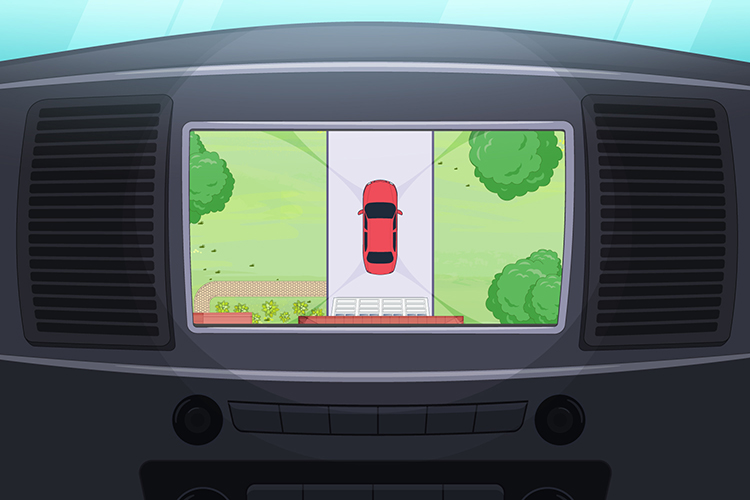How this technology works
Surround view cameras display areas around your vehicle while you’re stopped or when you’re driving slowly. The system displays the monitoring area on a screen in front of you.
Operation
The system automatically turns on when you move the vehicle from a parked position. You can switch off the display or change the display settings depending on your preferences.
Other names for this technology
- 360° camera
- 360° View Monitor
- Bird's eye view camera
- Intelligent Around View Monitor
- Multi-terrain Monitor
- Surround view system
- Surround Vision
- Top View Camera System
- Wide Front View & Side Monitor
Description
A screen on a vehicle’s dashboard shows an aerial view of the vehicle.
Things for drivers to keep in mind
- The area around your vehicle that the system displays can vary
- Most of these systems don't alert you if there's an obstacle to avoid
- There may be blind spots or image distortions where the camera views are combined so that pedestrians, cyclists or other objects aren't shown in the display
- Conditions such as rain, darkness, glare, or dirt on the camera can make it hard for you to see
- These systems are more effective if you drive slowly (less than 3 km/h) so you have enough time to react if you see an obstacle in the display
- The effectiveness of surround view cameras also depends on your driving habits
- Looking over your shoulder and checking the display image and mirrors frequently improves your chances of detecting obstacles
- You should read your owner's manual to learn about your vehicle's system, including its capabilities and limits
